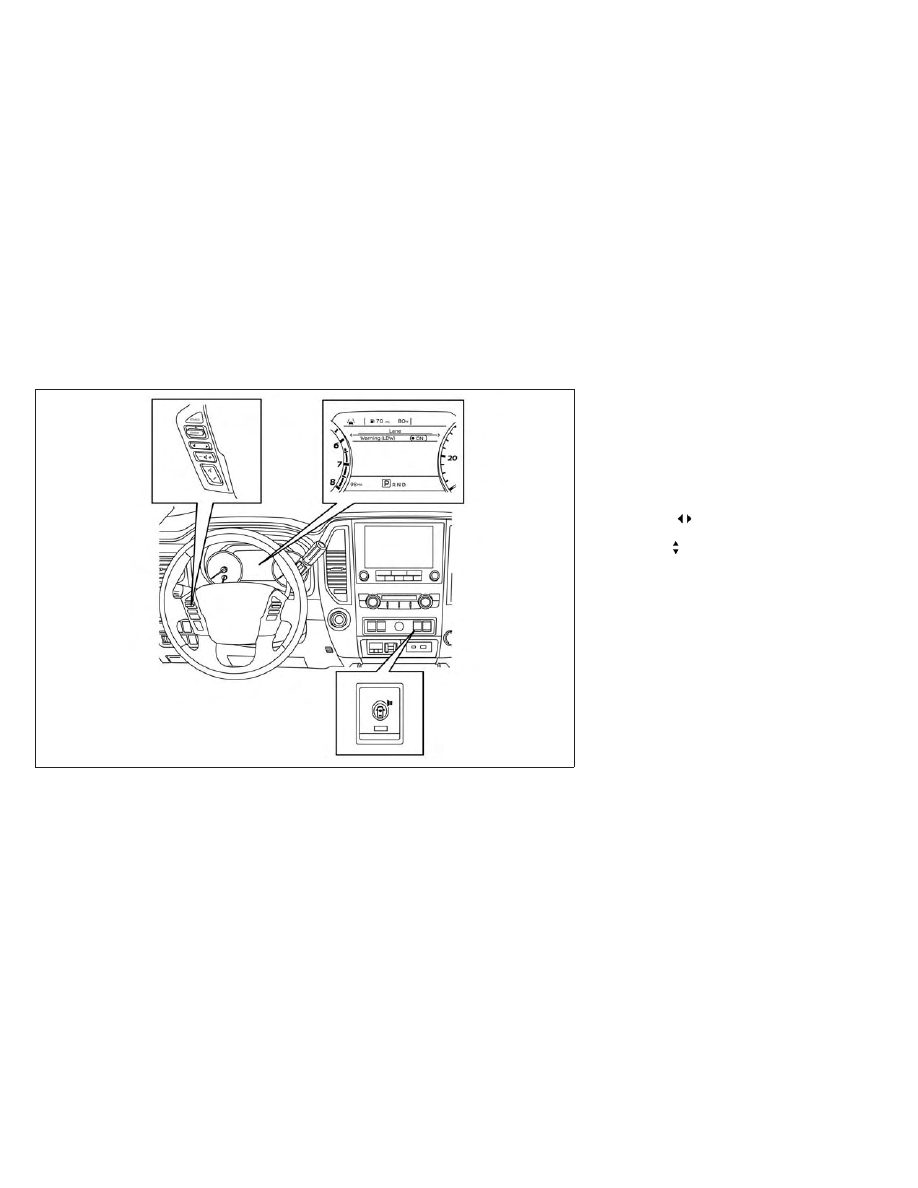Nissan Titan (2023 year). Manual in english - page 23

HOW TO ENABLE/DISABLE THE
LDW SYSTEM
When the LDW system is enabled in the
vehicle information display, the system can
be turned off temporarily by pushing the
warning systems switch. For additional in-
formation, see “Warning systems switch”
(P. 2-58).
Perform the following steps to enable or
disable the LDW system.
1. Press the
button until “Settings” dis-
plays in the vehicle information display.
Use the
button to select “Driver As-
sistance.” Then press the ENTER button.
2. Select “Lane” and press the ENTER
button.
3. Select “Warning (LDW)” and press the EN-
TER button.
4. Push the Warning systems switch to
turn the system on or off.
LSD4790
5-28
Starting and driving